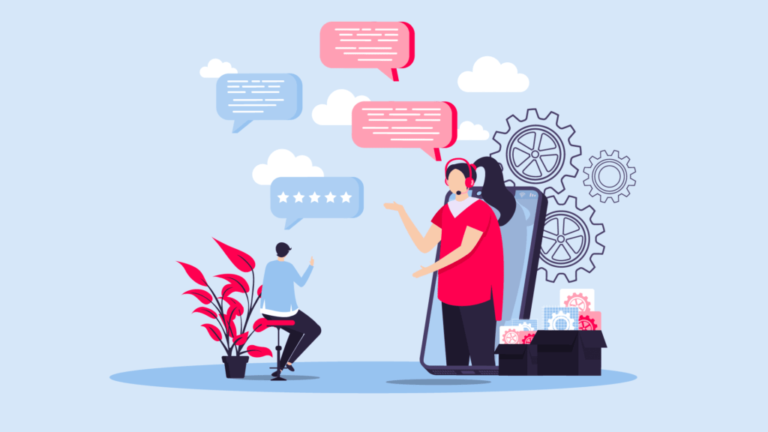Returns, especially after Black Friday, are a complex and often costly aspect of business in the ecommerce world. They’re also a fact of life. In December 2022, we sat down with Gulnaz Khusainova, CEO & Founder of Easysize, and Sophie Aubard, CEO & Co-founder of yayloh, to chat about the impact of returns, the data around them and how brands can leverage this data across the customer journey to reduce returns.
Hidden costs of returns
One key aspect of returns that is often overlooked is the cost involved. Sophie notes that “it’s very hard for brands to put a number on the cost of returns.” This is because it includes not only shipping and logistics costs but also hard-to-quantify elements. For instance, how much time does customer service spend handling a return? And then can you restock that item, or is it already out of hype, and then you can’t sell it anymore?”

Furthermore, issues in the supply chain have exacerbated these problems. Edited notes that YoY delivery times have dropped. This will have a knock-on effect on your ability to resell a returned item. If, as with one of yayloh’s customers, you sell something with a short selling window like swimwear, an item will spend all its time in transit and then the warehouse, making it almost impossible to resell during the same season.
In terms of pure cost, Gulnaz estimates, “it’s around 20% of the item’s price on average that brands will lose. And of course, some items will be much higher, especially if you sell items in the lower price range because just for shipping, you will probably spend the fixed cost of €10 to €15 or so. And if you sell a t-shirt for €25, half of that amount is already gone because you need to pay those costs.”
Another less-discussed cost of returns is the environmental aspect. Gulnaz notes something that has also been picked up by outlets like NPR and the BBC: that huge amounts of returned items go straight to landfill with no hopes of being resold. She tells us this is “either because it costs them more to process it, to clean it up, to repackage and put it back on the website, or because they can only sell it at a discount.”
Reduce returns by learning from your customers
Using customer data can be a powerful tool for reducing returns in your business. Although it may seem obvious, a key factor in limiting returns is discovering exactly why your customers are returning items. As Gulnaz puts it, returns are “an indicator that the experience is not quite hitting the mark.”

As Sophie pointed out, brands need to capture qualitative feedback, particularly regarding fit issues. This can help them to make necessary adjustments to future products. For example, she told us about a brand that was getting a lot of returns on a pair of pants. Once they started collecting more data on the reason for returning – beyond simply that they didn’t fit – they discovered that the leg measurement was too long, which was fed back to the production team for the next season.
As such, you need to collect more involved customer data than simply “it didn’t fit” or “it’s defective.” Finding out exactly why a customer returns can save you from sizing and fitting issues. It can also prevent defective products from being restocked, resold, and re-returned.
Educating customers to reduce returns
Once you’ve collected this data, you can use it to inform your customers to pre-empt further returns. It can be fed back into the website experience as well as product development. If customers are unclear on sizing and fit, you can provide images of a wider variety of models. Gulnaz mentions a cosmetics brand, Glossier, which has “maybe 15 shades of blushes, and they show how differently the same shade will look depending on your skin tone.” This helps customers make informed decisions.

By providing this information, you can alleviate one of the most significant issues in ecommerce right now: bracketing. Briefly, bracketing is when customers buy several of one item to ensure they get the right size, color, or fit. But despite 63% of shoppers reporting having done it at least once, Sophie doesn’t believe it’s inevitable. In fact, as she said, “everyone hates it. Brands hate it, but I think also consumers hate it… most customers just want to find the right product.” This information can be provided in various ways. You can have multiple models with different body types or use a tool like Easysize to provide more comprehensive sizing.
And don’t be shy in providing this kind of information across the customer journey. Although the checkout can seem sacred, Gulnaz points out it’s a great place to see if customers are bracketing and inform them of their options. You could, for instance, have a chatbot prompt the customer, asking them “whether they need some help with sizes and help them to go through the process.”
The same can be said of the climate cost of returns. Recent data from Captera found that consumers are willing to pay more for sustainable products and options. However, it may be that they don’t realize quite how impactful their return can be. So, informing the customer of the cost of their return can encourage them to do the research to make the correct purchase.
Change your mindset
The most important elements of the discussion can be summed up by a quote from each of our guests. Sophie encouraged everyone to “change how you look and act on returns.” Remember that your customer wants to buy the correct product for them. As such, your customer journey should be engineered to ensure they find the right item as painlessly as possible.
Gulnaz said to “use the data, collect the data, analyze the data, make sure you can put it into action… Don’t let the data disappear.” That way, finding the pain points where your customers are returning – either unintentionally due to production errors or intentionally because they’re bracketing – becomes much easier.
If you want to hear more of Gulnaz & Sophie’s wisdom, check out the episode of Ecommerce Corner they joined us on!
Fergus Doyle wrote this article with visuals by George Radu.





